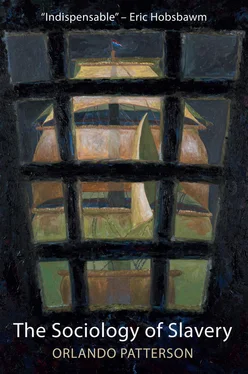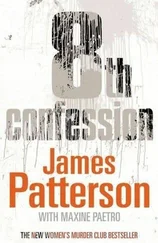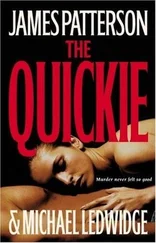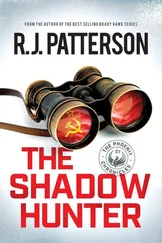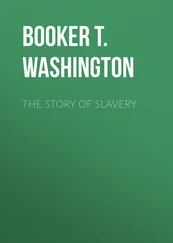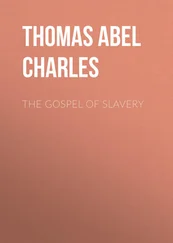The Sociology of Slavery concentrated on the sugar plantation sector of Jamaica’s slave system and, while no one doubts that sugar dominated the entire economy and social order to the very end, it is a reasonable complaint that the work neglected the sectors of the economy not in sugar, especially those sectors producing coffee, livestock and other produce. The works of Higman, 52Shepherd 53and Monteith 54have greatly illuminated these sectors. Higman 55showed that in 1832 the sugar plantations contributed 58.5 per cent of the island’s total income, compared with 12.6 per cent from the coffee plantations and 10.4 per cent from livestock pens.
My reason for not paying more attention to these sectors points to an important division in doulotic studies of slavery in Jamaica, recently highlighted by Burnard, 56a division based on temporality. There were profound differences between the state of affairs in Jamaica between the century and a half prior to the abolitionist movement leading to the ending of the slave trade in 1807 and what came afterwards. The Sociology of Slavery covered the entire period of slavery but was firmly rooted in the classic earlier period of 145 years, fully 80 per cent of the entire period of slavery, for most of which the sugar plantation was indeed predominant and the vast majority of enslaved toiled on them. It was also when the system was at its most ruthless and, as Burnard notes, and I completely agree, ‘All of us working on slavery in the period before abolitionism struggle with the realization that enslaved people’s lives were miserable and stunted in ways that make it hard to see how Jamaican slaves could have led any sort of lives that held any meaning for them.’ 57Indeed, one may well turn the issue around and question the overwhelming emphasis on the last forty years of slavery by the majority of studies on the subject, not only those on gender as previously noted. This was the period of abolitionist activism, with the planters’ backs increasingly up against the wall in an ideological battle that they eventually lost. During this period, in response to the relentless criticisms of the horrors of the system they had created, they desperately tried to ameliorate it. After the ending of the slave trade the amelioration intensified, not simply in response to abolitionist rhetoric, but out of the stark realization by the slaveholders that if they were to procure more enslaved persons, they had to induce them to reproduce. How reasonable is it then, to base one’s account of slavery in Jamaica on this last-gasp period of transition, to the neglect of the previous 80 per cent of the history of the system, which was the classic period of unrestrained wealth-generation based on the merciless exploitation of the enslaved and the protracted genocide of their recruitment, replacement and growth, made possible by the slave trade. 58
Perhaps not. This is like confining a study of the history of racism and the economic exploitation of blacks in America to the post-civil rights era. And yet, remarkably, the great majority of works on slavery in Jamaica are confined to this period. What accounts for this bias? A clue to the answer is the apocryphal story of the drunkard who lost the keys to his home in the dark but kept looking for them under the streetlight, because that’s where the light was. The data on Jamaica during the period of abolition are exceedingly, and temptingly, rich, accounting for the large number of historians of many nationalities attracted to the study of this period of the island’s slavery. That’s where the light is. Alas, that’s not where the keys to most of the horrors are to be found.
Turning to dominion studies, the first post-war study from this perspective focused on the West Indies is Elsa Goveia’s pathbreaking work on the British Leeward Islands. 59Her opening statement on the work is a good definition of what I am calling dominion studies: ‘The term “slave society” in the title of this book refers to the whole community based on slavery, including masters and freedmen as well as slaves. My object has been to study the political, economic and social organization of this society and the interrelationships of its component groups and to investigate how it was affected by its dependence on the institution of slavery.’ Goveia selected the Leeward Islands because they were among the most ‘mature’ of the British Caribbean societies and ‘analysis of its characteristics sheds light on the characteristics of plantation slavery and of “creole’’ society of the eighteenth century throughout the islands’. 60Furthermore, it was Goveia who was first to apply the concept of creolization, which she did repeatedly throughout the work. Although she contrasted her position with mine in her review of The Sociology of Slavery 61in arguing that the Leeward Islands’ slave system was ‘highly organized and integrated’, our positions were really not that dissimilar, since I am in complete agreement with her that that integration was entirely ‘on the basis of racial inequality and subordination of the labouring majority of blacks to the minority of whites’. Our views on the destructive nature of slavery on the familial and sexual lives of the enslaved are identical, 62and my view that the slave system was best viewed as a collection of largely self-contained plantation units, certainly when viewed from the perspective of the enslaved – the essence of my doulotic approach – is identical to her own verdict that: ‘At the end of the eighteenth century each of the plantations … was itself a small world, and the field slave was trapped in this world, like a fly in a spider’s web.’ 63Our principal difference was that she approached the system from a dominion or macro-level perspective. But there was another: she was writing about the Leeward Islands, whereas I wrote about Jamaica, a larger and much more complex and unequal system, possibly the most pitilessly cruel and exploitative in modern history.
Higman has also written most extensively from the dominion perspective, as have an impressive number of other scholars. As I have already hinted, he somewhat normalizes the role of the white slaveholder class and the slave economic system, especially in his study of the managerial aspect of the plantation regime. His Plantation Jamaica:1750–1850 64is an important and necessary work, but one reads it with some unease, a bit like reading a meticulous analysis of the Nazi Totenkopfverbände , the SS Death’s-Head Battalions that guarded and managed the concentration camps. Like all his other works, it is expertly crafted and thoroughly documented, and he is unsentimental in his approach to the subject, writing in the introduction:
Their business was exploitation and part of my task is to assess how efficiently they carried out that enterprise. It is only by taking this perspective that it is possible to understand the working of the larger system of plantation economy and the role of enslaved and free workers within the society. The people who did the hard work of the plantations remain essentially voiceless in the narrative, reduced to the tools of capital and themselves literally human capital. It is a harsh story.
Quite so. Nonetheless, other works such as Burnard’s are consistently more critical. 65From the older generation one may single out those of Brathwaite, 66Sheridan, 67the Bridenbaughs, 68Greene 69and Dunn. 70It may strike some as odd that I have classified Brathwaite’s work as a dominion study but, contrary to the popular view of the work as one focused on the life and culture of the slaves, it is largely devoted to the political, social and economic structure of the society and the role and attitude of the whites: only 59 of the text’s 312 pages directly examines the Black population. Brathwaite’s work is strongly influenced by Elsa Goveia’s study of the Leeward Islands, both in its attempt to interpret Jamaica during the same period of time as a systemic whole, and in his use of the creolization concept, neither of which is sufficiently acknowledged. In any case, his use of the concept of creolization is problematic in light of the still pluralistic and ‘disunited’ state of Jamaica and other West Indian societies emphasized by Goveia, 71the failure to distinguish localization from creolization, and the assumption that creolization entails assimilation and harmony, especially in sexual relations and racial mixing. His extraordinary view that it was ‘in the intimate area of sexual relations’ that ‘inter-cultural creolization took place’ by engendering a mixed group that helped ‘to integrate the society’, 72would certainly have been rejected by Goveia and, after the sickening revelations on Thomas Thistlewood 73whose cruelty and insatiable sexual sadism Douglas Hall agrees was the norm in Jamaica, 74must now be viewed with disbelief. The commonly held view that Brathwaite ‘coined and deployed the term creolization as a theory of Caribbean culture’, recently asserted by Kamugisha, is incorrect and puzzling. 75The concept was long in use among linguists, and its extension to Caribbean cultural processes received its definitive theoretical formulation in a 1968 conference at the University of the West Indies (coming after Goveia’s empirical use of the term), described by the Finnish creole scholar Angela Bartens as ‘one of the major events which initiated the era of modern creolistics’, 76a quarter of whose attendees were social scientists and historians, myself included, that Brathwaite would certainly have known about. 77
Читать дальше
